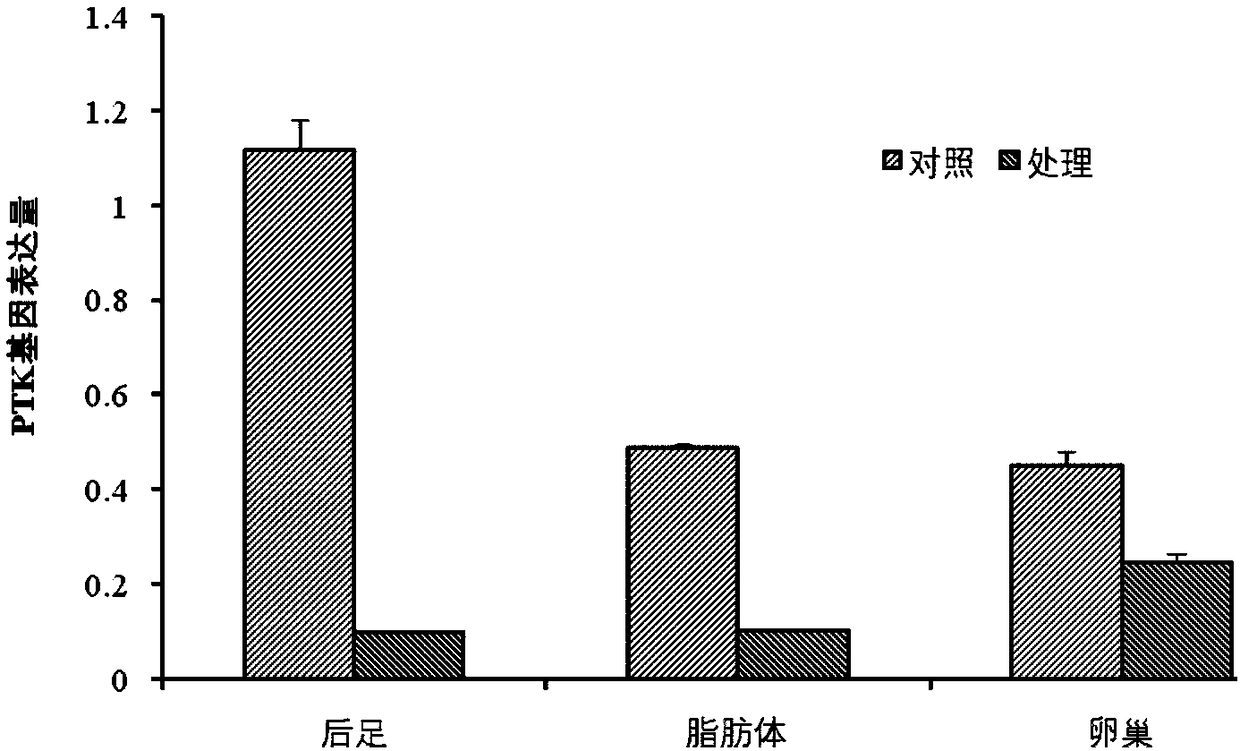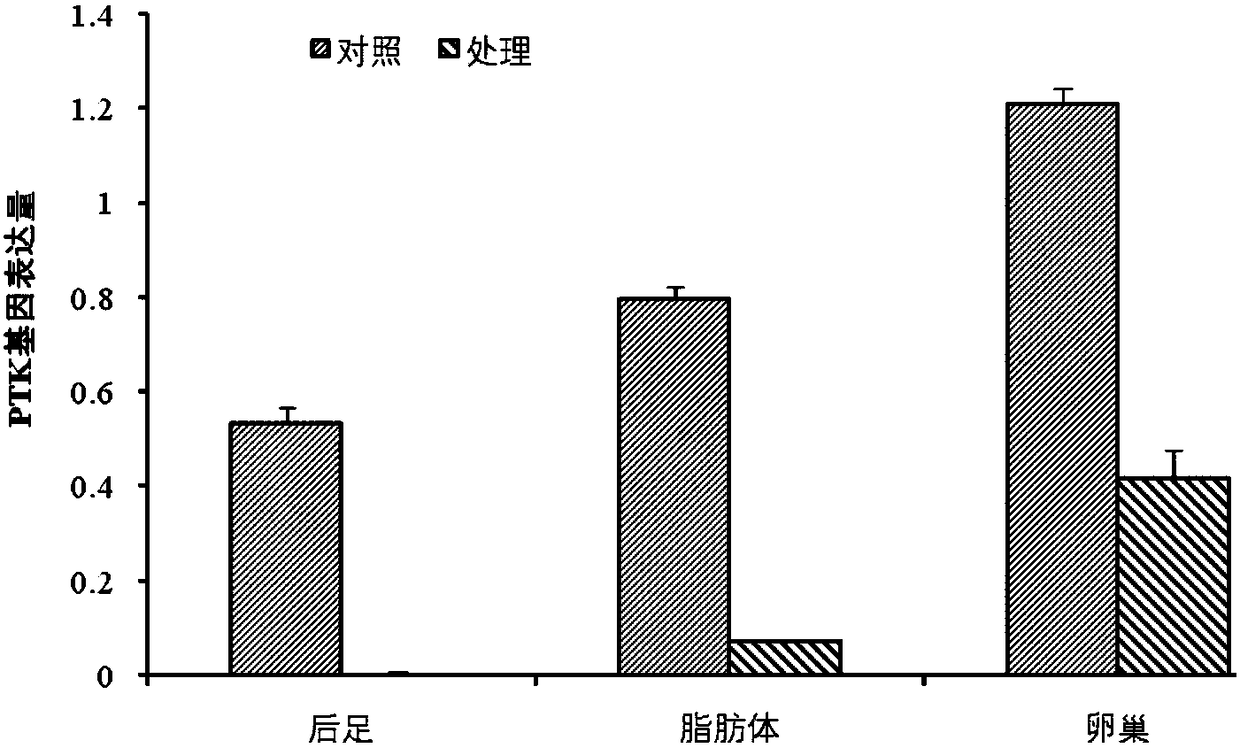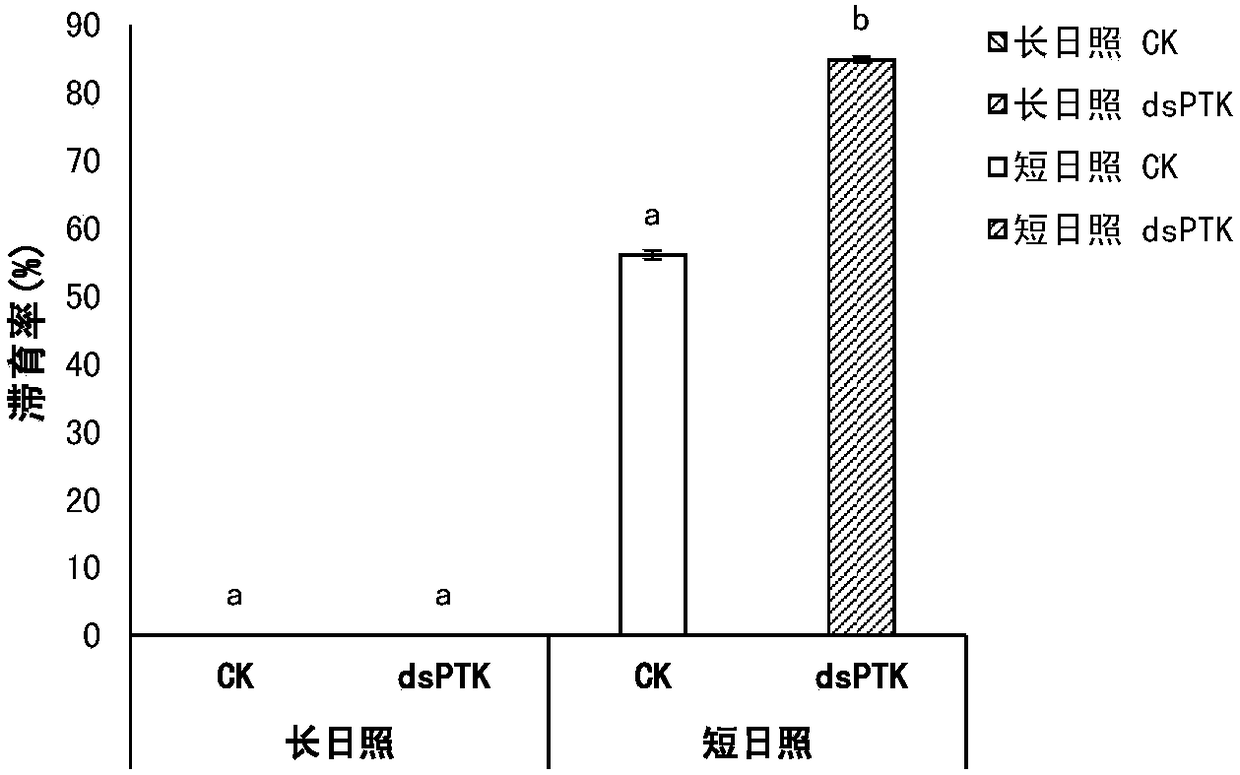Migratory locust protein tyrosine kinase PTK and coding gene and application thereof
A tyrosine kinase and coding gene technology is applied in the field of migratory locust protein tyrosine kinase PTK and its coding gene and application to achieve the effect of understanding the diapause mechanism of migratory locusts
- Summary
- Abstract
- Description
- Claims
- Application Information
AI Technical Summary
Problems solved by technology
Method used
Image
Examples
Embodiment 1
[0069] Embodiment 1, acquisition of migratory locust protein tyrosine kinase PTK and its coding gene
[0070] 1. Extraction of total RNA from migratory locusts
[0071] use RNA isolation reagents were used to extract RNA from migratory locust tissue samples. Specific steps are as follows:
[0072] 1) Put a 2ml homogenizer in an oven at 160°C for 3 hours, and cool to room temperature for later use.
[0073] 2) Put the homogenizer on ice, add 1ml RNA isolation reagent and 100-200mg migratory locust tissue, ground.
[0074] 3) Transfer the homogenate to a 1.5ml centrifuge tube and let stand at room temperature for 5 minutes. Centrifuge at 13000r for 5min at 4°C.
[0075] 4) Transfer the supernatant to a clean 1.5ml centrifuge tube, add 200μl chloroform, and vortex for 15s. Place at room temperature for 5 minutes. Centrifuge at 13000r for 10min at 4°C.
[0076] 5) Transfer 400 μl of supernatant to a new 1.5 ml centrifuge tube, add 200 μl of chloroform, and vortex for 30...
Embodiment 2
[0109] Embodiment 2, the dsRNA of migratory locust protein tyrosine kinase gene PTK and its application in controlling migratory locust
[0110] 1. Synthesis of dsRNA
[0111] Using T7RiboMAX TM The Express RNAi System Kit synthesizes dsRNA. Specific steps are as follows:
[0112] 1) Synthesis of dsRNA primers
[0113] Design primers based on the cloned gene fragments, amplify the target fragment to about 600bp, and introduce T7 promoter at the 5' end of the primers. The primer sequences are as follows:
[0114]PTK-2F: 5'-TAATACGACTCACTATAGGACGATTCACAGGAACATTGGTG-3';
[0115] PTK-2R: 5'-TAATACGACTCACTATAGGCATCTTGACAGCGACATCTATGG-3'.
[0116] 2) Preparation of DNA template
[0117] The bacterial liquid plasmid was extracted with a kit, and the plasmid containing the gene fragment (recombinant vector in Example 1) was used as a template, and PTK-2F and PTK-2R were used for PCR amplification to obtain the target fragment containing the T7 promoter sequence.
[0118] The ...
PUM
| Property | Measurement | Unit |
|---|---|---|
| concentration | aaaaa | aaaaa |
Abstract
Description
Claims
Application Information
 Login to View More
Login to View More - R&D
- Intellectual Property
- Life Sciences
- Materials
- Tech Scout
- Unparalleled Data Quality
- Higher Quality Content
- 60% Fewer Hallucinations
Browse by: Latest US Patents, China's latest patents, Technical Efficacy Thesaurus, Application Domain, Technology Topic, Popular Technical Reports.
© 2025 PatSnap. All rights reserved.Legal|Privacy policy|Modern Slavery Act Transparency Statement|Sitemap|About US| Contact US: help@patsnap.com



